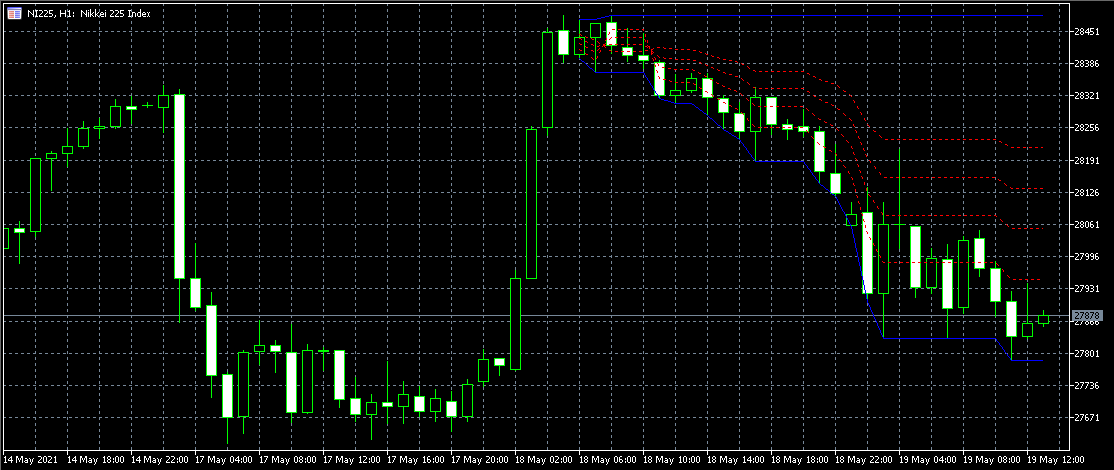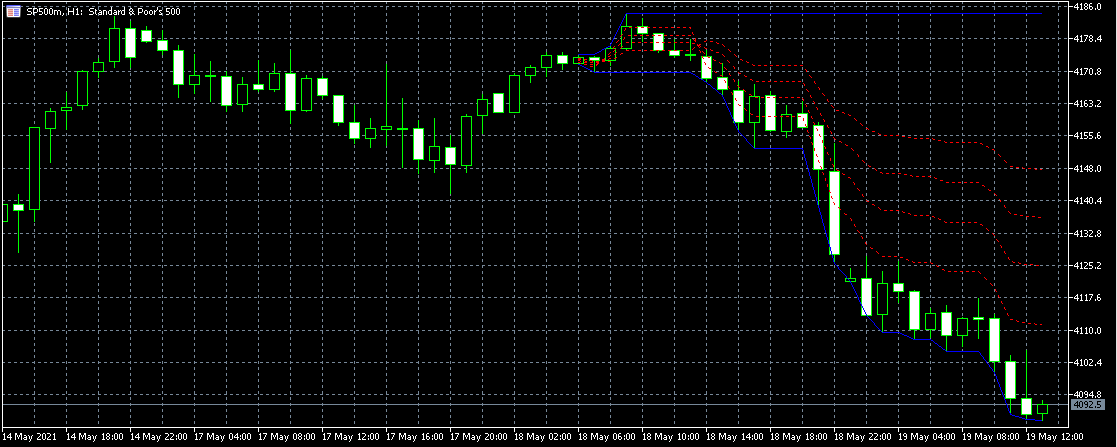Fibonacci Indicator in Stocks Explained
As already mentioned, Fibonacci Indicators are widely used in the stock market. For example, if you purchase a share at $100 and multiply this by the ratio, you get a level of $61.8, which may be a good stop loss. When this ratio is multiplied by the stock price, it will provide useful information on target ranges, stop losses, and points of entry for stock trading.
Fibonacci indicators in stock trading usually show the ratios. These ratios, such as 61.8 percent, 38.2 percent, and 23.6 percent, will assist a seller in determining the potential degree of retracement. These thresholds may be used by traders to spot themselves for a deal. The indicator is usually divided into two important segments, the Fibonacci retracement indicator, and the Fibonacci Ratio indicator. We will discuss them in detail below.
Fibonacci Retracement
Following the identification of Fibonacci ratios, horizontal lines are drawn and used to define potential assistance and resistance levels. Fibonacci retracements are widely used by traders to draw lineouts, classify tension thresholds, position stop-loss signals, and set price targets.
In order to determine A Fibonacci retracement, you need to divide the vertical gap between two radical points on a stock chart by the main Fibonacci ratios of 23.6 percent, 38.2 percent, 50 percent, 61.8 percent, and 100 percent.

Fibonacci retracement indicators in stocks have the same limitations as other universal trading instruments, however, they are usually used with the combination of other technical indicators, which makes this indicator more efficient and successful for stock trading.
These Fibonacci ratios appear to play some role in the stock market, as they do in nature, for uncertain reasons. Technical traders attempt to use them to identify key points where the market movement of a commodity is expected to reverse.
These Fibonacci indicators are the most commonly used Fibonacci trading method. This is due in part to their simple versatility and in part to their usefulness to virtually every trading instrument. They can be used to outline support or opposition lines, as well as to position stop-loss orders and set goal prices. Fibonacci ratios may also be used as the core principle in a countertrend trading technique.
Each level is correlated with one of the above ratios or percentages. It indicates how much of a previous shift the market has retraced. The previous pattern is likely to persist. However, the price of the stock normally retraces to one of the above-mentioned ratios before that happens. Most popular trading platforms have software that automatically draws horizontal lines. Take note of how the market shifts course as it reaches the support and resistance thresholds. What’s more, except for the discussed ratios, stock traders are using 50% levels, which is effective, as well.
Despite their success, Fibonacci retracements have certain philosophical and technological drawbacks that traders should be mindful of until employing them.
For example, any Fibonacci tool's fundamental theory is a computational paradox that is not supported by any logical proof. The Fibonacci sequence's portions, percentages, series, and formulations are simply the product of a mathematical method. Though that's not to say whether Fibonacci trading is intrinsically inefficient. It may, however, be unsettling for investors who want to consider the reasoning behind a plan.
Furthermore, trading stocks with the Fibonacci indicator may only indicate potential modifications, distortions, or countertrend bounces. This method has difficulty confirming other metrics and does not have immediately discernible positive or weak signals.
Fibonacci trading indicators can have the same problems as other technical indicators, like Elliot Wave Theory. However, you should consider that many traders are finding the Fibonacci Sequence quite helpful and supportive during stock trading. The main idea behind these indicators is to use them with other trading indicators, to raise the chances of having successful trading in the stock market and make your strategy more efficient as well.
Fibonacci Ratios
Fibonacci indicator in the share market, as already mentioned, is quite effective for some stock traders. The Fibonacci Sequence was discovered by the Middle Age mathematician Leonardo Fibonacci, who observed the continuous sequence and the way they could make perfection in nature.

Fibonacci ratios are showing the relationship between the numbers and are defined as 23.6%, 38.2 %, 50%, 61.8%, and 100%. After that, those ratios start to repeat respectively.
It is mysterious how those numbers make such a perfect combination and can lead the traders to rational decisions. Through the Fibonacci ratios, traders can define the future price changes in the stock market. For example, let’s say that a certain stock was estimated at $100. After that, for some reason, the price changed and became more than 38.2% of the previous price. After that, if the price grows by 50%, the chances of the next price change of 61.8% are extremely high. And if the scenario goes the desired and predicted way, the chances of price change by 100% is even higher.